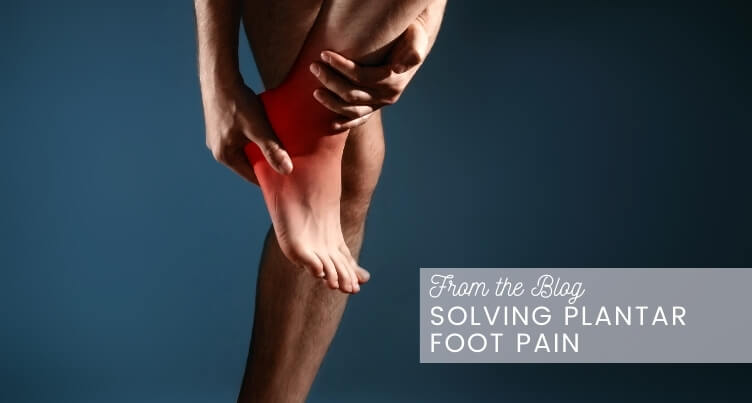
Solving Plantar Foot Pain
Do you ever take that first step in the morning only to be met with excruciating heel pain?
Or maybe it sets in after a long day of working on your feet. Whatever the trigger is for you, the likely culprit is something called plantar fasciitis, which is a condition that results in inflamed tissue that travels from your heel bone to your toes.
It’s often a result of repetitive strain, and factors can include running, exercise, wearing shoes with inappropriate features, jumping, abnormal foot mechanics, weight gain, a traumatic injury, standing on ladder rungs or pressing on foot pedals among other things.
At Dr. Katharine du Quesnay, we want you to feel your best naturally. If you’re struggling with foot pain, consider giving the following a try.
Legs up the Wall. A pelvic “Reset”. Did you know that a tight calf or hamstring muscle can aggravate or even cause plantar fasciitis? The goal is to release tension generated by tight hams or calf muscles, and to reset a distorted pelvis that could be contributing to that. Start by sitting on the floor with your side tight against the wall, legs out in front of you. Gently guide your back to the floor while spinning 900 so that your legs go up the wall, while keeping your bottom tight to the wall. Your knees don’t have to be straight, you can leave a comfortable bend in them if needed. If you find this position painful or you just can’t get comfortable, do a gentler version by laying on your back on the ground with your legs (from the knee crease to the ankle) rested on a chair. Here, your knees and hips are both bent at about 900, so you will lose the calf stretch and part of the ham stretch, but allows you to reset the pelvis. Remain here, working your way up for about 2 – 10 minutes.
Ice bath for your feet. Using a plastic tub filled with ice cold water and a few floating ice cubes, submerge your foot for 30 – 60 seconds at a time. You can leave the ends of your toes out of the water to make this more tolerable. When you take your foot out, wrap it loosely in a towel to slowly warm up for 2 – 3 minutes, then re-submerge in the ice bath. Repeat this 4 – 6 times per session. Try to do 1 – 3 sessions each day depending on how acute your problem is and how quickly you want to make it change. This is a great way to bring down the inflammation, accelerate healing and manage pain.
Towel curls. Once the foot pain is less intense, you can begin to work your foot muscles more. Place a small towel on the ground in front of you while you’re seated in a chair. Place your heel on the bottom of the towel. Now, grab the towel with your toes as you curl them toward your body, gathering the towel up under your foot. Progress by repeating this a few times.
Toe pickups. In a seated position, place 10 small objects in the ground next to an empty bowl—marbles or something of a similar shape and size will work great. Pick up one item at a time by curling your toes and placing them into the bowl. This helps to exercise and stretch your feet.
Foot Flexes. While seated, place your legs out in front of you. Place an elastic exercise band or a large towel around your foot while continuing to hold the ends with your hands. Gently point your toes toward, then away from your body, holding each position for a few seconds before switching.
Plantar Fasciitis, like many symptoms, is usually a sign that you’ve pushed past your ability to cope. There can be many complicating factors, some of which may be specific to you. If you’re looking for more support as you work to overcome foot pain and improve function, we’re here for you. Contact our team to find out if chiropractic can help you reach your goals in health.
